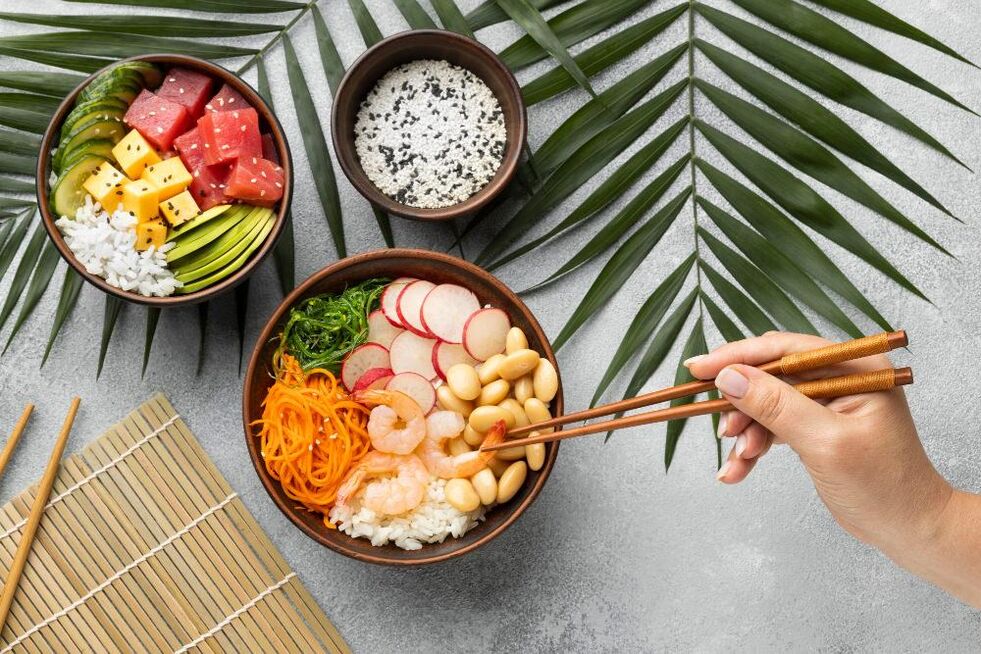
What is the essence of Japanese food?
- Not suitable for pregnant and lactating women.
- It is prohibited for patients with gastritis, gastric ulcer, liver, kidney, and cardiovascular system diseases.
Before starting a diet, it is essential to consult a doctor!
origin of name
- The menu was compiled by a Japanese nutritionist at a clinic in Tokyo.
- Clear and simple diagrams based on Japanese philosophy. Its principle is simple: give your best effort and get the rewards you deserve.
Basic rules of Japanese eating
- vegetable.
- fruit.
- Dry bread.
- fish.
- Meat.
- Olive tree oil.
- chicken.
- dairy.
- Egg.
- fish.
- beef.
If you feel unwell or have a headache, it is best to stop eating and drinking. and consult your doctor.

Basic foods of Japanese diet
- Loose Green Tea: Flavorless.
- Good coffee beans or ground coffee.
- Tomato juice: 1 liter.
- Every day - fresh (! ) kefir, 1 liter.
- Medium white cabbage - 2 pcs.
- Eggplant and zucchini - 0. 5 kg each.
- Carrots - 2-3 kg.
- Any fruit (except bananas and grapes) - 1 kg.
- Lemon - 2 pieces
- Lean beef - 1 kg.
- Skinless and boneless chicken - 1 kg.
- Boneless marine fish - 1 kg.
- Eggs - 20
- Olive oil (cold pressed) - 0. 5 liters.
Similarities between Diet and "Chemical" Diet
Japanese food menu
If you don't want to bother with the menu, download a special application. It will give you suggestions about certain foods and how to prepare them. The disadvantage is the English interface.
advantage
- Maintain the results obtained in the long term (proper nutrition and moderate intake).
- Releases waste products and toxins. The intestines are cleansed due to the intake of fiber and water.
- Significant budget savings. These products are cheap and easily available.
- Improves skin tone and general skin condition. Hair and nails become stronger.
- feels good.
- Almost all products are hypoallergenic.
defect
- Initial physical and psychological preparation.
- No snacks, no "normal" breakfast. Persistent hunger.
- Drab menu.
- unbalanced.
- Extensive list of contraindications.

































